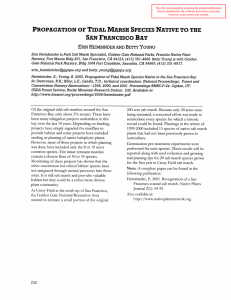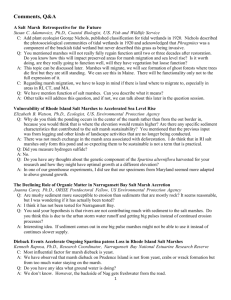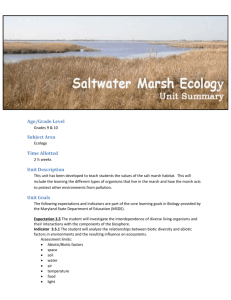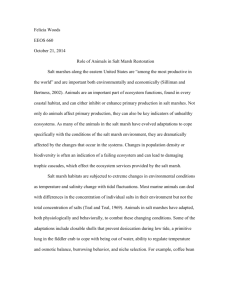salt marsh - blackpoolsixthasgeography
advertisement
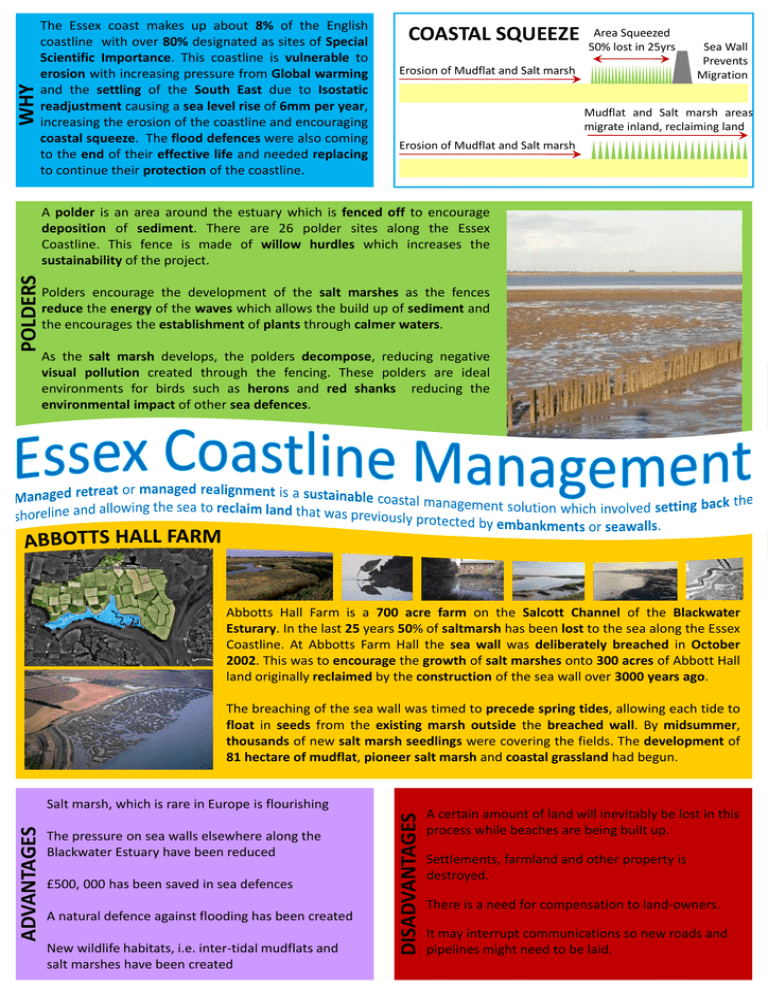
WHY The Essex coast makes up about 8% of the English coastline with over 80% designated as sites of Special Scientific Importance. This coastline is vulnerable to erosion with increasing pressure from Global warming and the settling of the South East due to Isostatic readjustment causing a sea level rise of 6mm per year, increasing the erosion of the coastline and encouraging coastal squeeze. The flood defences were also coming to the end of their effective life and needed replacing to continue their protection of the coastline. COASTAL SQUEEZE Area Squeezed 50% lost in 25yrs Erosion of Mudflat and Salt marsh Sea Wall Prevents Migration Mudflat and Salt marsh areas migrate inland, reclaiming land Erosion of Mudflat and Salt marsh POLDERS A polder is an area around the estuary which is fenced off to encourage deposition of sediment. There are 26 polder sites along the Essex Coastline. This fence is made of willow hurdles which increases the sustainability of the project. Polders encourage the development of the salt marshes as the fences reduce the energy of the waves which allows the build up of sediment and the encourages the establishment of plants through calmer waters. As the salt marsh develops, the polders decompose, reducing negative visual pollution created through the fencing. These polders are ideal environments for birds such as herons and red shanks reducing the environmental impact of other sea defences. Abbotts Hall Farm is a 700 acre farm on the Salcott Channel of the Blackwater Esturary. In the last 25 years 50% of saltmarsh has been lost to the sea along the Essex Coastline. At Abbotts Farm Hall the sea wall was deliberately breached in October 2002. This was to encourage the growth of salt marshes onto 300 acres of Abbott Hall land originally reclaimed by the construction of the sea wall over 3000 years ago. The breaching of the sea wall was timed to precede spring tides, allowing each tide to float in seeds from the existing marsh outside the breached wall. By midsummer, thousands of new salt marsh seedlings were covering the fields. The development of 81 hectare of mudflat, pioneer salt marsh and coastal grassland had begun. The pressure on sea walls elsewhere along the Blackwater Estuary have been reduced £500, 000 has been saved in sea defences A natural defence against flooding has been created New wildlife habitats, i.e. inter-tidal mudflats and salt marshes have been created DISADVANTAGES ADVANTAGES Salt marsh, which is rare in Europe is flourishing A certain amount of land will inevitably be lost in this process while beaches are being built up. Settlements, farmland and other property is destroyed. There is a need for compensation to land-owners. It may interrupt communications so new roads and pipelines might need to be laid.

